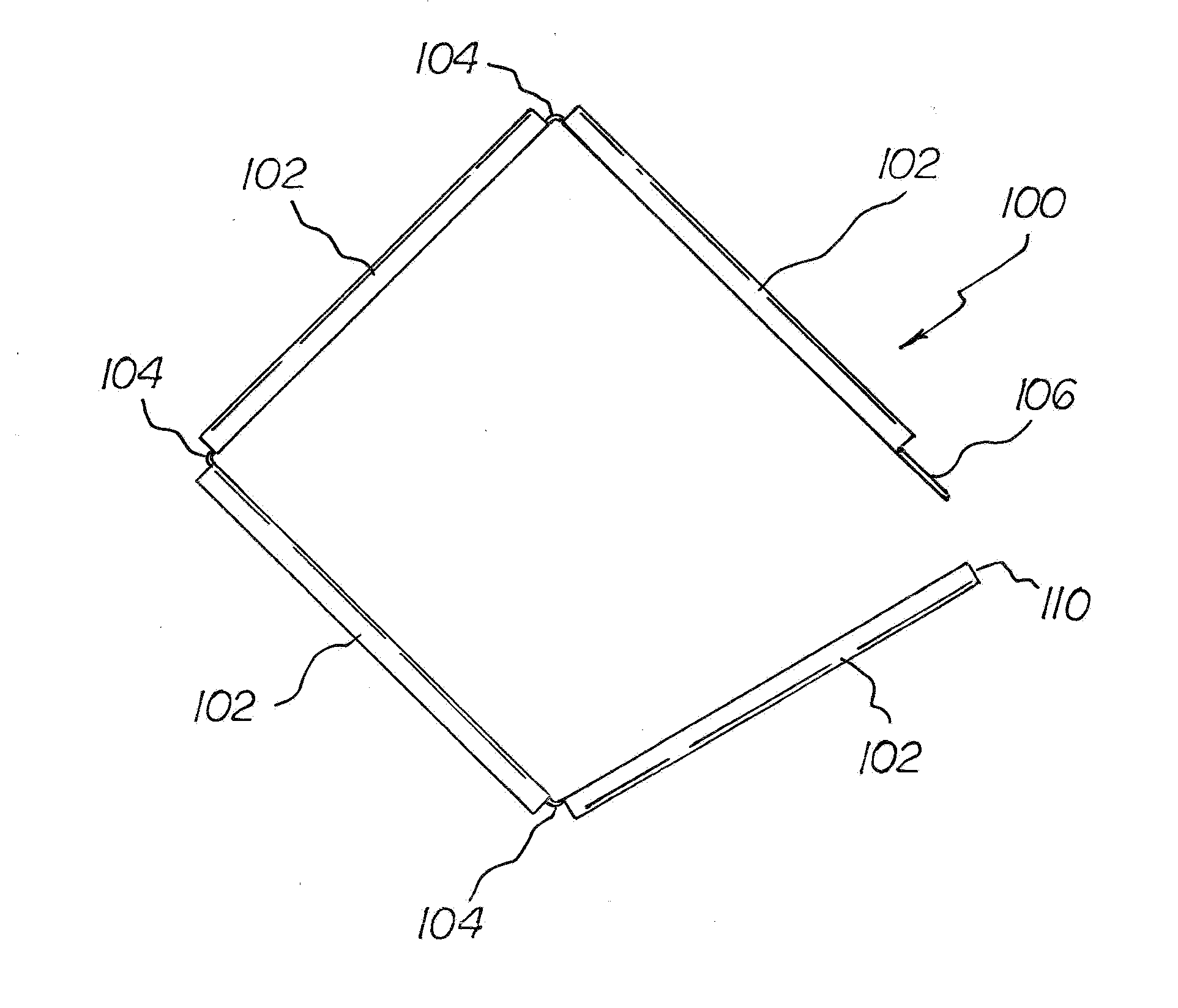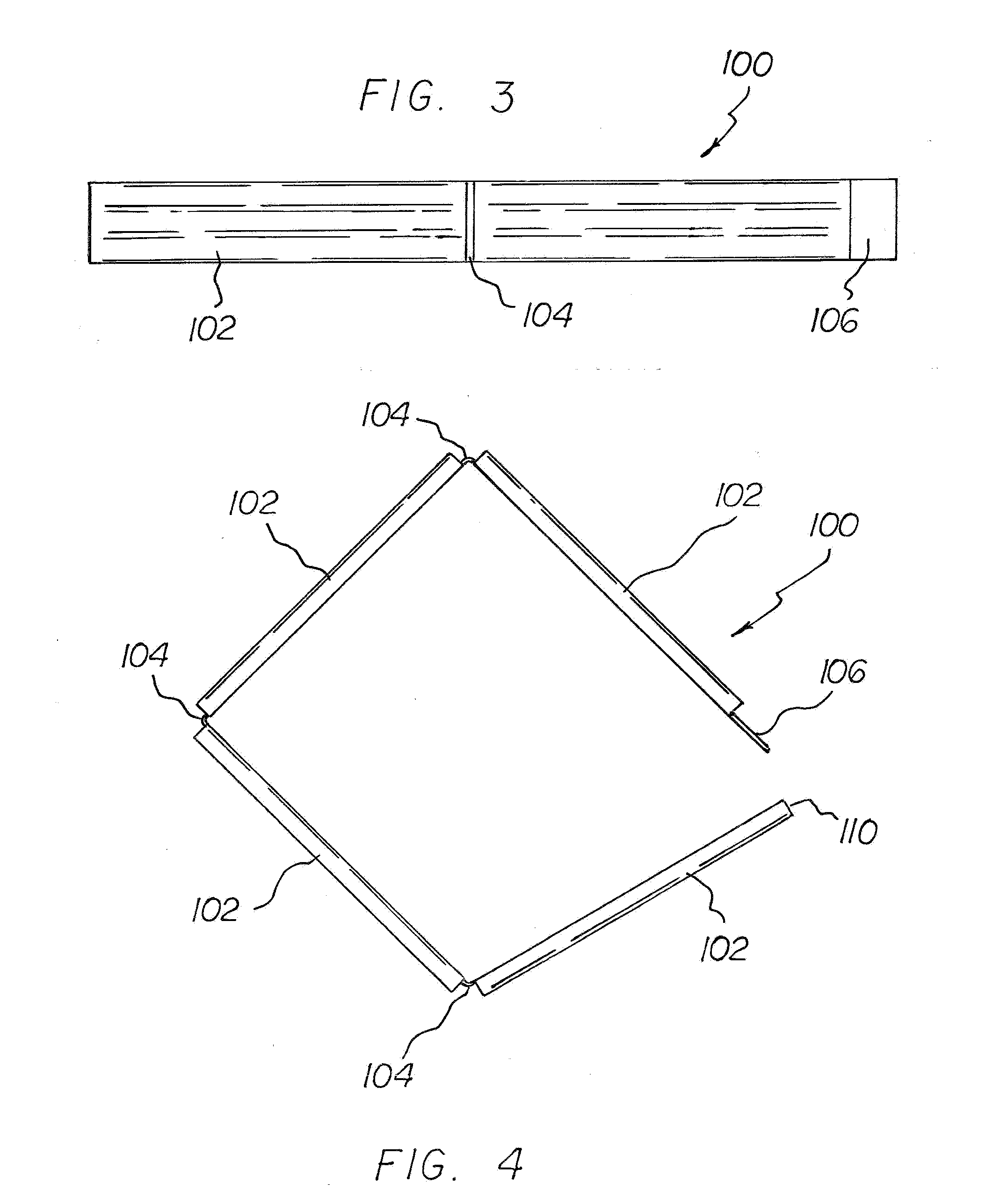Collapsible cardboard concrete form
a concrete form and cardboard technology, applied in the field of cardboard concrete forms, can solve the problems of difficult transportation of prefabricated or factory-made forms, difficulty in ensuring the safety of construction workers, and high cost of wood boards, so as to prevent moisture damage to the form
- Summary
- Abstract
- Description
- Claims
- Application Information
AI Technical Summary
Benefits of technology
Problems solved by technology
Method used
Image
Examples
Embodiment Construction
[0015]A collapsible cardboard concrete form is disclosed and generally designated 100. An advantage of the concrete form 100 is that the material of the form 100 is biodegradable and can be left in place to decompose. The concrete form 100 is non-toxic so that as the form 100 decomposes in place, the ground in the proximity is not contaminated. For example, the concrete form 100 may be comprised of compressed cardboard, recycled paper or other recycled material. The cardboard is used as the fiber to make the form 100 durable enough to hold back the pressure of the concrete. Compressed cardboard may be made of bio-degradable non-toxic cellulose that is bonded with glue that is also bio-degradable and non-toxic. The glue is used to bond at the corners as well as the fibers of the cardboard material of the form 100. Non-toxic glue may be used as a binder for the cardboard to prevent the fibers in the cardboard form 100 from breaking apart when exposed to moisture and before the concret...
PUM
 Login to View More
Login to View More Abstract
Description
Claims
Application Information
 Login to View More
Login to View More - R&D
- Intellectual Property
- Life Sciences
- Materials
- Tech Scout
- Unparalleled Data Quality
- Higher Quality Content
- 60% Fewer Hallucinations
Browse by: Latest US Patents, China's latest patents, Technical Efficacy Thesaurus, Application Domain, Technology Topic, Popular Technical Reports.
© 2025 PatSnap. All rights reserved.Legal|Privacy policy|Modern Slavery Act Transparency Statement|Sitemap|About US| Contact US: help@patsnap.com



